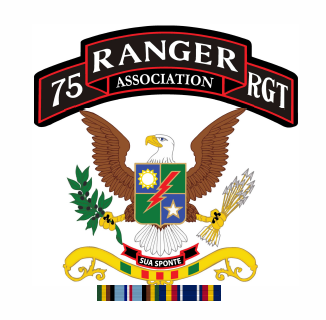History
Become a Member
Make a Donation
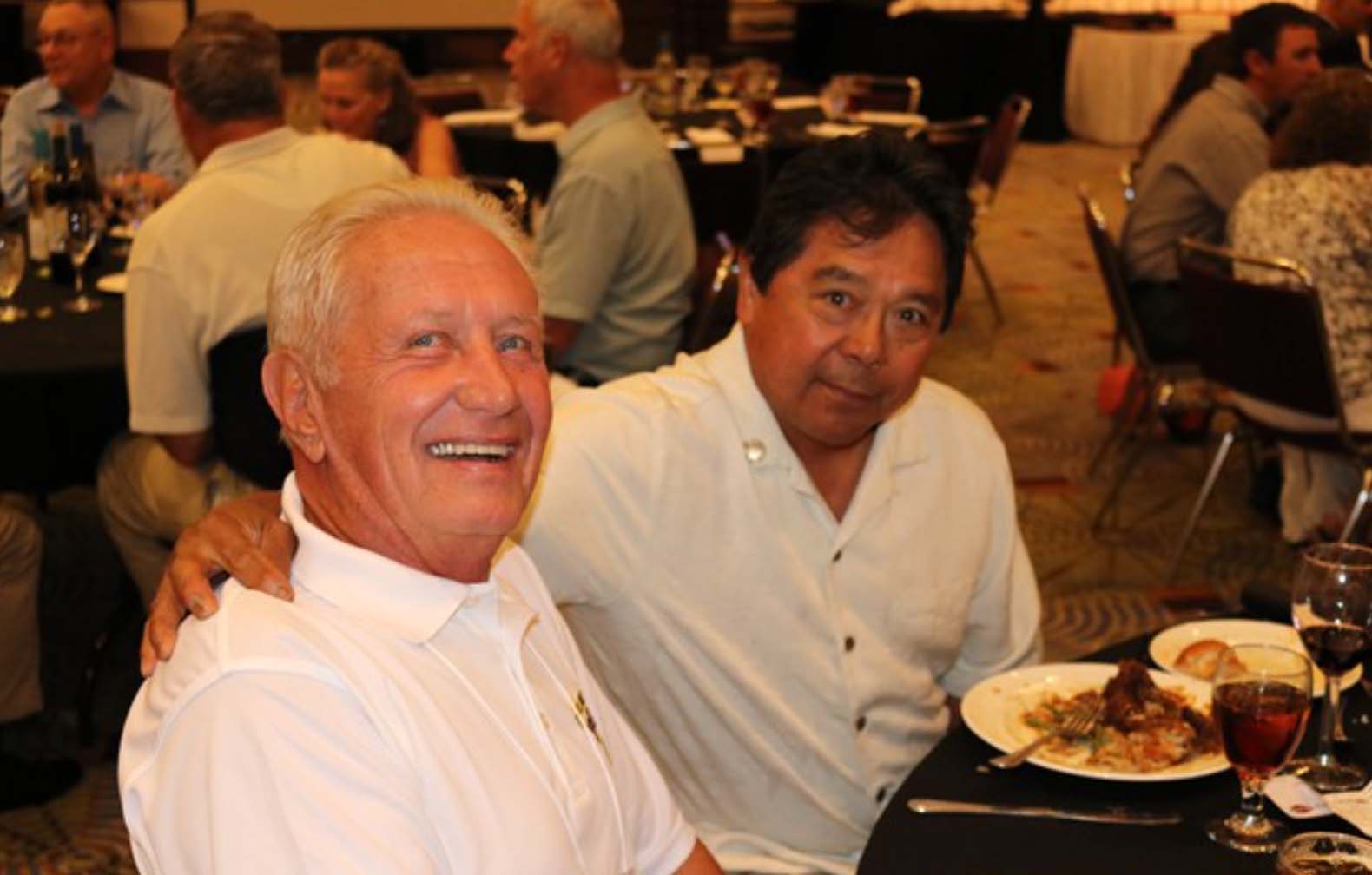
Association Est.
Ranger Officially Est.
By Randy White
The Birth of an Association
Associations don’t just happen; they are created for a purpose and with a vision for the future. The 75th Ranger Regiment Association [RRA] is no different than any other organization in this regard. The efforts and labors of a few men created the seeds that have grown into the association we now enjoy and sometimes take for granted. I feel it’s only fitting to record the founding and early growth of our association before those who were there at the beginning move on to their last mission, and the story is lost forever. For those of you who were at the first meeting at Fort Campbell in 1986, it should bring back some memories of what many 101st people call the greatest reunion ever. For those who don’t know the full history of the early years and our struggles, read on.
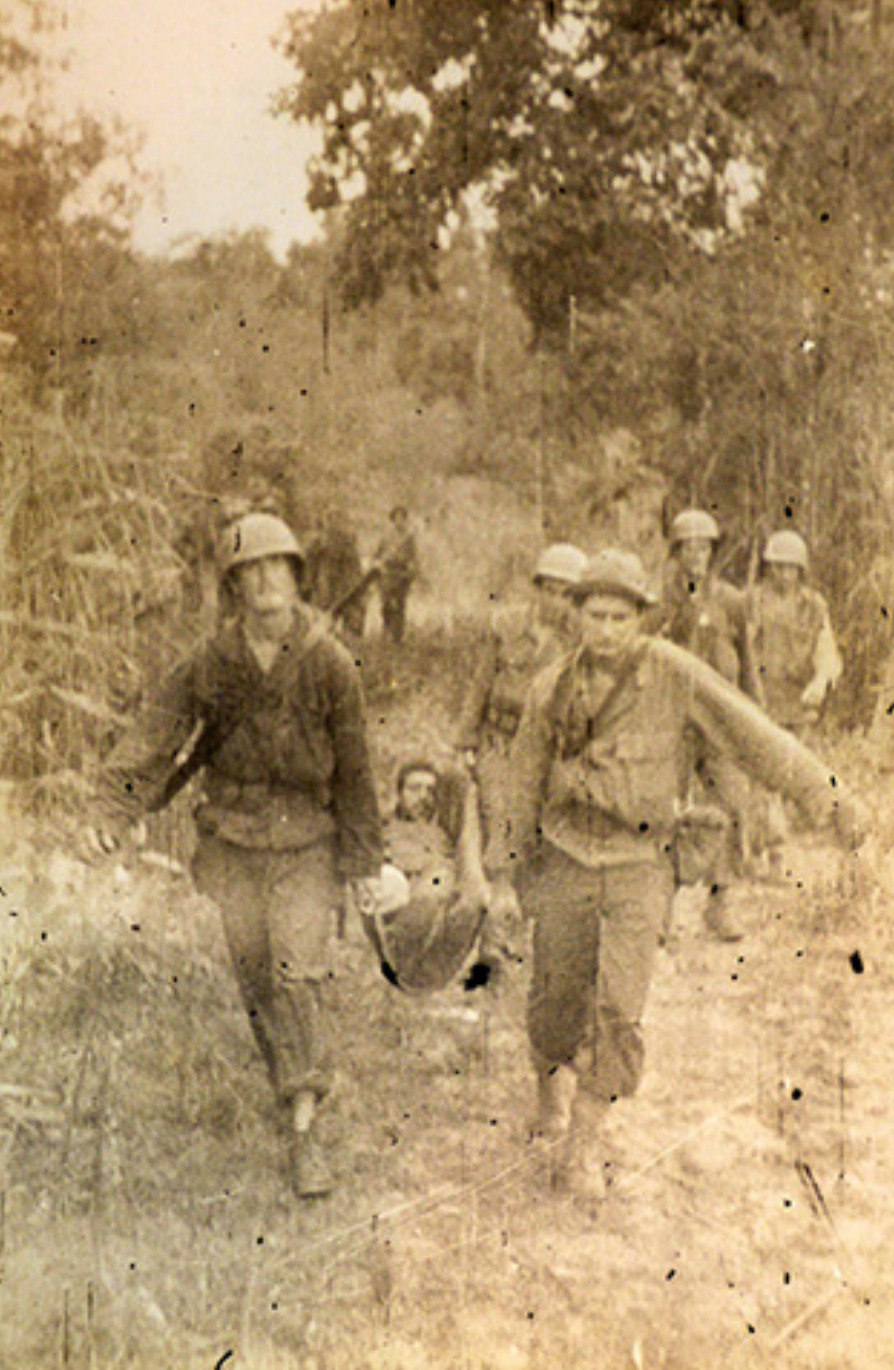
The history of the 75th RRA started with telephone call during March of 1985 from Donald H. Lynch, Company “F” 58th Infantry, Long Range Patrol, 101st Airborne Division to retired Command Sergeant Major Robert F. Gilbert a former First Sergeant for Company L, Ranger 75th Infantry. This phone call set the stage for the first ever reunion fourteen months later of 101st Airborne Division Reconnaissance members, and ultimately the formation of the 75th Ranger Regiment Association.
First a little background: During the late summer of 1985 Bob Gilbert attended a meeting of the Airborne Walk Committee at Fort Benning, GA. after noting in the Airborne Static Line newspaper that the 75th Rangers were not represented at the Airborne Walk. At that meeting the editor of “Static Line” Don Lassen, mentioned that they had been meeting and talking for eighteen months concerning the walk and that it was time for the various Airborne units to “put their money where their mouths were.” He demanded they talk to their organization Presidents and bring their funds for individual unit monuments to the next meeting. Following the meeting, his first, Bob Gilbert asked Henley Woods, President of the Airborne Walk Association what the cost of the individual monuments was. He was advised $2,500. Not having an organization or President to talk to, Gilbert called Lynch who immediately notified the LRRP, LRP and 75th Rangers he had addresses for. After three weeks, enough money was collected to pay for one round of beer for six people. As the day for his second Airborne Walk meeting was closing in on him, Gilbert decided to withdraw the $2,500.00 memorial funding from his personnel Bank account with Columbus Bank and Trust Company, [CB&T] and provide it to Don Lassen for a 75th monument. Recognizing that later on no one would believe he was obtuse enough to buy that rock for a unit with no association, Gilbert went to Sergeant Major Riley C. Miller (P/75th) who was then Operations NCO for the 75th Ranger Regiment. He wanted a witness to the withdrawal and the purpose for it. Miller accompanied Gilbert to the Bank and observed the transaction. After Gilbert presented his $2,500.00 check for the 75th Ranger monument on the Airborne Walk, Don Lassen used that same check in photos with other members of the committee so that he could place the pictures in Static Line newspaper and push the other Airborne units into providing their share of the money to the Airborne Walk Committee.
During the autumn of 1985 Lynch located Billy J. Nix a former member of Company L/75th Rangers, who became the third of the three principal founders of the Association. Donald Lynch had expertise with computers to include graphics work and began establishing a series of rosters for the association. He formulated not only an alphabetical roster he also provided rosters by state, by Zip Code and one by units of the LRRP, LRP and 75th Rangers. Lynch also provided a series of proposed logos one of which was used on the initial T-shirts offered by the association. Lynch was using the space in a computer at the business he worked for in Minnesota to perform all of these extra tasks. He rose early in the freezing, blustery mornings to go to work long before he was due there to perform all of the budding association business. Meanwhile down in Georgia, Billy Nix in his line of work was able to access discharged and retired veteran’s addresses searching for missing men. As more individuals became aware of these efforts, unit orders that men still had copies of were forwarded to Billy. Billy spent a great deal of his time locating these men and was responsible for locating the addresses and phone numbers of approximately one thousand eight hundred members out of the approximately twenty-two hundred names from all units whose names appeared on the initial rosters and those still in use today. Some of these men had moved and efforts were successful in tracking down and bringing many of them into the budding association. Those names Nix determined were still on or had returned to active duty with the Army, were turned over to Bob Gilbert who was able to track active duty personnel through his contacts.
During the winter of 1985-1986 Lynch notified Gilbert that the101st men were making noises about holding a reunion, and after agreeing it should occur Lynch took action to establish the first ever reunion at Clarksville, Tennessee. Adjacent to Fort Campbell Kentucky, home to the 101st Airborne Division Screaming Eagles, a more fitting location could not be found. The list was growing by the time the”Eyes of the Eagle” men came to Tennessee and Fort Campbell during June 1986 for “Week of the Eagle.” Near the close of the reunion on Saturday morning June 7th 1986 at approximately 09:00 hour, Lynch called the first ever meeting of the 101st members to order. Lynch promoted Gilbert into talking to the assembled 101st members after first asking them “where do we go from here?” This became the theme Gilbert used to address the crowd before him that fateful morning. Knowing that the Army had recently activated a 3rd Ranger Battalion and a 75th Regimental Headquarters, and that the men before him were their history, Gilbert asked the men if they would like to form an organization. With a resounding yes from the group, the finest Ranger Association in the world was born. He suggested using the name 75th Ranger Regiment Association, which would allow the new organization to tie into the active duty units and be supportive of them in their peacetime and wartime endeavors. Following a short break and discussion, the assembled members of the 101st Airborne Division voted unanimously to follow this recommendation and the resolution was passed. After the meeting, a table was set up and the men stood in line to join the new association and pay their membership fee. I was number twenty five in that line.
Also present at the reunion were two members of other units when the 101st members formed the association. These were retired Sergeant Major John Kingeter who had served with Delta and Mike Companies 75th Ranger Infantry and an earlier LRRP unit, and a now deceased member of Charlie Company 75th Rangers. These two men along with the 101st Airborne LRRP, Company F/58th Infantry LRP and Company L/75th Ranger Infantry were the Co-Founders of the 75th Ranger Regiment Association. Principal founders were Donald H. Lynch, Robert F. Gilbert, and Billy J. Nix. They were joined by a fourth principal founder Nicholas Gibbone, a Certified Public Accountant from L/75th who assumed duties as Treasurer and worked through the IRS for the tax exempt status beginning at that reunion. Bob Gilbert agreed to act as interim President with the others assuming duties as Secretary [Don Lynch], Vice President [Billy Nix], and Treasurer [Nicholas Gibbone]. During the following months at Columbus Georgia, Gilbert opened the association bank account at CB&T, and Lynch sent additional funds collected at the June reunion to boost the account. Gilbert also obtained the 75th RAA charter from the Georgia Secretary of State and began writing the initial Constitution & By-Laws [C&BL] for the 75th Ranger Regiment Association. During the first reunion of the new 75th Ranger Regiment Association in 1988, Billy Nix was elected President and this C&BL was approved unanimously on July 27th at Columbus, Georgia with all units being represented. When members of the LRRP, LRP and 75th Rangers learned about how the 75th Ranger Monument was obtained they contributed $1,250.00 to Gilbert to help refill his personnel coffers. All of these men own a piece of the monument at the Airborne walk.
These early years of the association were marked by a constant struggle to gain credibility and recognition of the association by other established organizations. When Fort Benning officials failed to fund a social event for the Annual Best Ranger Competition [ABRC] in 1988 Gilbert saw an opportunity, should it present itself again. When no social event was funded by Fort Benning officials during the 1989 David Grange ABRC, the fledgling association stepped forward with a plan to sponsor the event. With the urging of Gilbert, the new association officers authorized the spending of the funds and catapulted the 75th Ranger Regiment Association into the limelight among the other established Ranger Associations. This single move drew the attention of the other Ranger organizations that would not then recognize the 75th Association as a legitimate organization and made them stand up and take notice of the upstart association. When the other Ranger organizations learned of the event being sponsored by the 75th Ranger Regiment Association they went wild. One President was heard saying, “Who are these guys? Where do they get that kind of money from? How many members do you have in the 75th?” That financial move made by Billy Nix and the others, made the 75th Ranger Regiment Association one to be reckoned with.
In a further effort to gain notoriety for the organization, Gilbert undertook writing a column concerning the exploits of the LRRP, LRP and 75th Rangers in Vietnam for the “Static Line” newspaper. For thirty nine months these articles appeared in that monthly publication, exposing the deeds of the Vietnam era LRRP/Ranger units to a wider Airborne audience, and no doubt adding further recognition to the association. All this was done before the proliferation of computers we enjoy today. Despite these moves, battles continued to be fought for credibility. During this time period from 1985 to 1989, an attempted was made by another Ranger Association to remove the 75th Ranger Regiment from Army rolls. A phone call by Gilbert’s to the Merrill’s Marauders Association President helped prevent that disastrous event. These same detractors wrote several articles for Soldier of Fortune and Association of the US Army magazine claiming the 75th Regiment Rangers and their Vietnam predecessors were not, “REAL RANGERS.” Imagine if you can trying to build an organization from scratch, not being accepted by any other Ranger organizations and having to simultaneously fend off attacks like these.
Every good association offers its members a news letter, and the Patrolling magazine you look forward to reading was named by Bob Gilbert. To publish the initial copies of Patrolling Magazine, Gilbert wrote the first two issues on an electric typewriter and obtained the services of a local printer before mailing the magazine.
During July 1990 at the Association reunion Gilbert was again made President this time by the election of the members, and without his knowledge. He only learned about it when Roy Nelson congratulated him! Billy Nix and Roy Boatman stood by laughing because they knew Gilbert was unaware of his election due to poor hearing caused by concussion damage.
During March 1991 Gilbert and Duke DuShane (who was elected Vice President) met a WWII Ranger in charge of the events planned for honoring fifty years of modern Rangers, scheduled for 1992. The events had been planned for several years, however we were the first Association to offer any assistance to the WWII Ranger Association. They were astounded and most appreciative for the offer. During this fifty year reunion planning the Ranger Memorial planning was concurrent and the overall event was truly outstanding. The initial Ranger hall of Fame inductions were initiated and Gilbert acting as the 75th President entered the three Medal of Honor recipients from the LRP and Ranger units in Vietnam. During planning for the fifty year event, Gilbert learned that the Ranger Training Brigade Headquarters was going to be named and he approached the then Command Sergeant Major of the Ranger Training Brigade CSM Heckerd and informed him that a Ranger School Graduate from Company G/75th Ranger Infantry had earned the Medal of Honor in Vietnam. He recommended that the Ranger Training Brigade be named for the Medal of Honor recipient from G/75th Robert J Pruden. It was accomplished. Following seven years and three months of building the 75th Ranger Regiment Association, the two remaining original founders Billy J. Nix and Robert F. Gilbert decided it was time to release control of the association. Accordingly no one among the founders or co-founders from the 101st Airborne Division stood for election as President during the 1992 reunion or has since.
The drive, hard work and tenacity of a few men with a vision for the future resulted in the association we now hold in such high esteem. Without their dedication and tireless efforts towards a common cause, the brotherhood we now share as members of the finest Ranger Association on the planet might never have happened. If you should meet one of these founders at a reunion, take a minute to say thanks for a job well done.
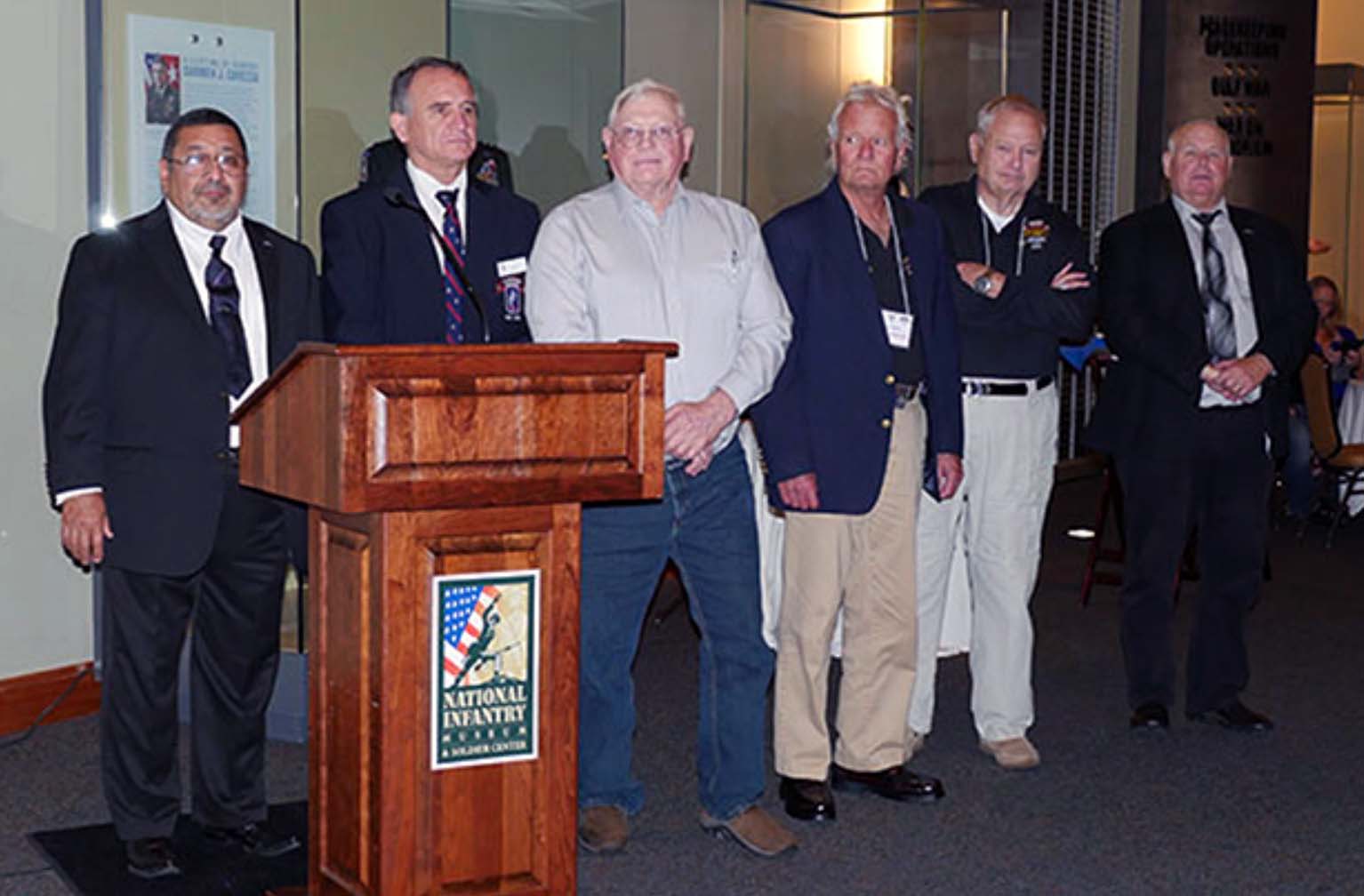
Become a Member
Ranger History
THE VIETNAM WAR
The U.S. Army’s Long Range Recon Patrols evolved in Germany from NATOs development of the concept in the late 1950s. This concept was influenced by the British Special Air Service’s (SAS) successful use of small, independently operating, deep reconnaissance patrols.
The Ranger Creed
Recognizing that I volunteered as a Ranger, fully knowing the hazards of my chosen profession, I will always endeavor to uphold the prestige, honor, and high esprit de corps of my Ranger Regiment.
Acknowledging the fact that a Ranger is a more elite soldier who arrives at the cutting edge of battle by land, sea, or air, I accept the fact that as a Ranger my country expects me to move further, faster and fight harder than any other soldier.
Never shall I fail my comrades. I will always keep myself mentally alert, physically strong and morally straight, and I will shoulder more than my share of the task, whatever it may be, one hundred percent and then some.
Gallantly will I show the world that I am a specially selected and well-trained soldier. My courtesy to superior officers, neatness of dress and care of equipment shall set the example for others to follow.
Energetically will I meet the enemies of my country. I shall defeat them on the field of battle, for I am better trained and will fight with all my might. Surrender is not a Ranger word. I will never leave a fallen comrade to fall into the hands of the enemy, and under no circumstances will I ever embarrass my country.
Readily will I display the intestinal fortitude required to fight on to the Ranger objective and complete the mission, though I be the lone survivor.
In 1969 the LRRP/LRP companies were redesignated as Ranger companies of the 75th Infantry (Ranger) Regiment, and inherited the lineage of the 5307th Composite Unit (Provisional), and the 475th Infantry. To many of the soldiers who had already been fighting in the jungles, mountains and swampy delta areas of Vietnam, the change meant very little at the time. They just continued performing the same mission they had been for the previous four to five years.
There were also Vietnamese Rangers (1960-75) during this conflict, trained and advised by American Rangers. These BDQ (Biet-Dong-Quan), commonly known as ARVN Rangers, fought in larger-sized units.
Like the Marauders and the 475th Infantry Regiment in W.W. II, albeit in much smaller teams, these Ranger and predecessor LRRP/LRP units had the mission of working deep within an enemy’s areas of operation. The tenacity and excellence of the Ranger tradition was clearly demonstrated by the heroism of these volunteers. A total of four Medals of Honor were bestowed (three posthumously) on men who had fought in these units.
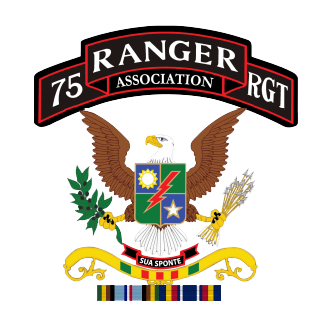
75th Ranger Regiment Association, Inc.
PO Box 2200
Orangevale, CA 95662
